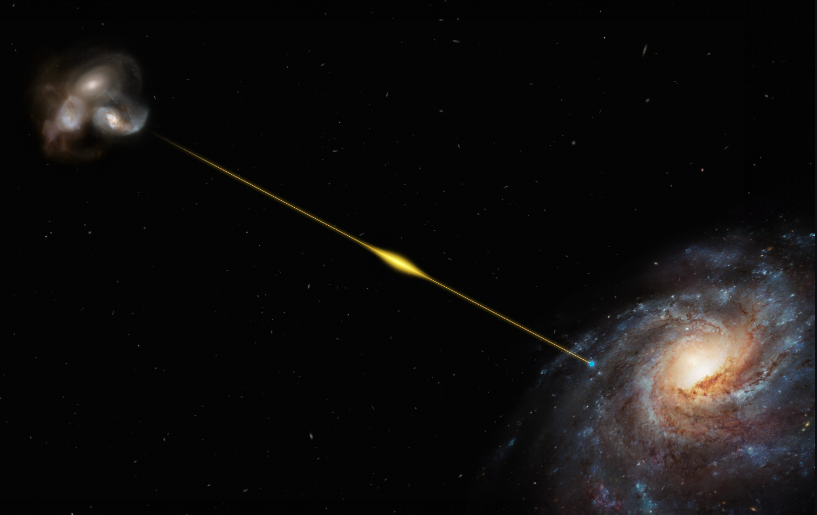A new breakthrough in radio astronomy has unveiled a record-breaking fast radio burst (FRB) that takes eight billion years to reach Earth. According to CNN, the mysterious FRB is one of the most distant and energetic ever observed.
This discovery, led by Dr. Stuart Ryder from Macquarie University and Associate Professor Ryan Shannon from Swinburne University of Technology, shattered their previous record by 50 percent and confirmed the potential of FRBs in probing the elusive cosmic matter that lies between galaxies, Scimex reported.

The Fast Radio Burst From Merging Galaxies
The origin of this burst has been traced to a group of two or three merging galaxies, aligning with current scientific theories regarding the source of FRBs.
Moreover, it has been found that our current telescopic capabilities can effectively detect and pinpoint FRBs dating back as far as eight billion years.
The event was captured on June 10, 2022, by the CSIRO's ASKAP radio telescope in Wajarri Yamaji Country in Australia. This particular FRB released an amount of energy equivalent to our sun's total emissions in a span of 30 years, all within a fraction of a millisecond.
The burst, named FRB 20220610A, has reaffirmed the feasibility of utilizing FRB data to weigh the universe, a concept initially proposed by the late Australian astronomer Jean-Pierre 'J-P' Macquart in 2020.
Known as the Macquart relation, this principle suggests that the farther an FRB is, the more diffuse gas it unveils between galaxies. This discovery validates the Macquart relation, upholding its applicability to regions extending beyond half of the currently known universe.
With nearly 50 FRBs identified thus far, almost half through the use of ASKAP, researchers anticipate the potential detection of thousands more, including those located at even greater distances.
The forthcoming Square Kilometre Array (SKA) telescopes, currently in construction in Western Australia and South Africa, are poised to enhance the precision of FRB detection, enabling the study of even older and more distant FRBs.
Additionally, the Extremely Large Telescope by ESO, under construction in the Chilean desert, will play a pivotal role in examining the galaxies from which these FRBs originate.
This achievement was made possible through a collaborative international effort involving institutions and researchers from various countries, including the Netherlands, Chile, Japan, the UK, and the USA, alongside prominent Australian institutions like Macquarie University, Swinburne University of Technology, CSIRO, ICRAR/Curtin University, ASTRO 3D, and the University of Sydney.
Fast Radio Burst Can be Used to Measure 'Missing' Matter Between Galaxies
The discovery also addresses a current challenge in cosmology, as existing methods for estimating the universe's mass yield conflicting results, prompting a reevaluation of the standard model.
Shannon said: "We think that the missing matter is hiding in the space between galaxies, but it may just be so hot and diffuse that it's impossible to see using normal techniques."
In this context, fast radio bursts provide a unique window into this ionized material, offering a means to measure the density of intergalactic matter even in seemingly empty regions of space. That, in turn, holds promise for refining our understanding of the cosmic landscape.
FRBs are reportedly intense, millisecond-long bursts of radio waves coming from unknown origins. The first FRB was discovered in 2007, and since then, hundreds of these cosmic flashes, lasting only a few milliseconds at most before disappearing, have been detected from distant points across the universe.
The findings of the research team were published in the journal Science.
Related Article : Astronomers Find Strange Object Being Dragged Into Milky Way's Supermassive Black Hole

ⓒ 2025 TECHTIMES.com All rights reserved. Do not reproduce without permission.




